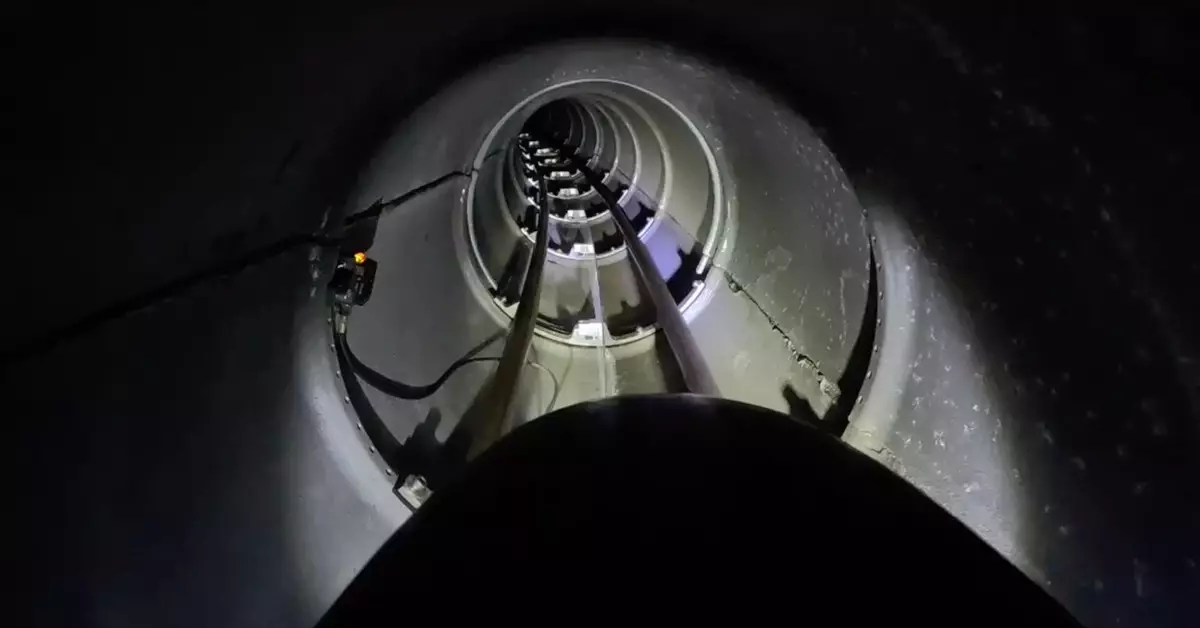In the realm of futuristic transportation, Elon Musk’s hyperloop concept has garnered enthusiasm as well as skepticism. After a dismal period where major companies pivoted away from this ambitious project, it appears that there’s still a flicker of hope in the form of a 1/12th scale model being tested in Switzerland. However, does this recent development signify a resurgence for hyperloop technology, or is it merely a reiteration of an idea mired in logistical challenges and financial hurdles?
Originally proposed in Musk’s 2013 white paper, the hyperloop was envisioned as a revolutionary mode of transport that could whisk passengers across urban landscapes at speeds nearing 760 mph. With its concept of aerodynamic capsules traversing nearly vacuum-sealed tubes, it promised to redefine commuting across cities. Yet, the tenacity of the hyperloop idea faces the continuous reality check of practicality. The model being tested in Lausanne, Switzerland, while significant in its unique operational execution, is still a far cry from realizing the massive infrastructure and technology needed for a full-scale version.
The current test, organized by a consortium that includes the Federal Institute of Technology Lausanne and Swisspod Technologies, has recorded a modest achievement—travelling 11.8 km at a speed of 40.7 km/h. Though it may seem promising at first glance, the translation of this experiment to urban scale travel raises questions about viability. While their claims of scaling this achievement to journeys of 141.6 km and speeds of up to 488.2 km/h could revolutionize commutes, they remain theoretical until real-world applications are realized.
The record of hyperloop technology is littered with failed entrepreneurs and unfulfilled projects, primarily due to financial mismanagement and regulatory roadblocks. Multiple startups that initially surged with ambition have either retracted or completely shut down. It prompts a discussion around the hyperloop’s viability: how much of this remains a utopian vision versus a feasible reality? Critics have long labeled the hyperloop as a “vaporware” concept—promising in its presentation but lacking tangible outcomes.
Moreover, the collapse of Hyperloop One and stagnant developments from other key players in the field heightens the skepticism surrounding the technology. This isn’t just about the engineering finesse but involves navigating through a plethora of regulations and substantial capital investment—all of which present formidable challenges.
While the Swiss initiative shows promising developments, some perspective is crucial. The project’s name, LIMITLESS, encapsulates the ambitious nature of the hyperloop vision; however, it can also signify the limits imposed by current technological and financial landscapes. The company aims to develop not only a passenger system but also a freight application, but how these visions materialize remains to be seen. Shipment applications for a technology that has yet to clear the passenger transport hurdle sounds optimistic at best and naïve at worst.
The CEO of Swisspod Technologies, Denis Tudor, is assertive about their potential contributions, suggesting that if steps are appropriately taken, the concept could eventually alter how we perceive transportation altogether. Yet, one must wonder if these projections overlook the substantial shadow cast by Musk’s own inconsistencies. As he diverts his focus to another venture, it’s unclear whether the promise of hyperloop will retain traction or dissolve into obscurity, much like previous revolutionary transport notions.
While the existence of a 1/12th scale hyperloop model in Switzerland breathes a semblance of life into a project previously deemed extinguished, substantial hurdles remain. The optimism among proponents might be tested against the backdrop of historical failures and the current socio-economic climate, which presents both a challenge and an opportunity for advancements in transportation technology. For hyperloop technology to transition from theoretical posturing to functional reality, a convergence of innovative engineering, adequate funding, and, importantly, public interest will be required. Until then, it may be healthier to manage our expectations as hyperloop remains an ambitious dream lingering in the realm of possibilities.

